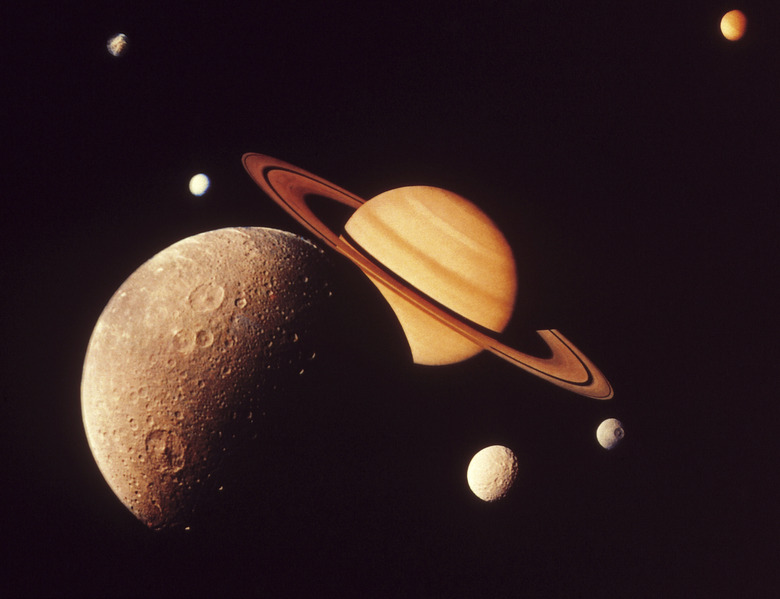What Chemicals Make Up Mercury's Atmosphere?
Among other discoveries, the 2008 Messenger spacecraft mission has revealed new information on the chemicals that make up Mercury's atmosphere. The atmospheric pressure on Mercury is extremely low, about a thousandth of a trillionth of Earth's at sea level. Data shows that Mercury has carbon dioxide, nitrogen and other familiar gases, although in very small total amounts.
Carbon Dioxide and Carbon Monoxide
Carbon Dioxide and Carbon Monoxide
According to the Messenger findings, carbon dioxide gas makes up over 95 percent of Mercury's atmosphere. Although on Earth, carbon dioxide is strongly associated with life, it is very unlikely that Mercury's blistering maximum daytime temperature of 427 degrees Celsius (800 degrees Fahrenheit) and near-vacuum conditions support any known living organisms; instead, the CO2 there is most probably due to volcanic and other activities on the planet's surface. Carbon monoxide is also present at 0.07 percent.
Water Vapor
Water Vapor
Surprisingly, Mercury's atmosphere contains tiny amounts of water vapor — 0.03 percent. Although Mercury cannot have oceans, water ice has been detected in the cold polar regions where shadows create permanent frigid zones hidden from sunlight. The water vapor may be the result of hydrogen and oxygen combining in Mercury's atmosphere.
Nitrogen and Oxygen
Nitrogen and Oxygen
Nitrogen and oxygen are two gases that make up the majority of Earth's atmosphere, and they appear in Mercury's as well. The abundance of nitrogen is 2.7 percent of Mercury's air, and oxygen accounts for 0.13 percent. On Earth, plants are responsible for the production of oxygen. The source of Mercury's small amount is a subject of speculation; it may come from meteorites bearing water, which then splits into hydrogen and oxygen in the powerful sunlight. Other sources may include the breakdown of minerals on Mercury's surface.
Argon Gas
Argon Gas
Argon is an inert gas, rarely reacting with other chemicals or even itself. It amounts to 1.6 percent of Mercury's atmosphere. Along with other gases, Mercury's argon probably seeps out from deep inside the planet and is released by volcanoes and meteorite impacts; minerals are unlikely sources as argon doesn't react chemically to form any known mineral.
Trace Gases
Trace Gases
Mercury has other chemicals in its atmosphere, although the exact concentrations are very small and difficult to measure. Hydrogen and helium are known to exist, likely arriving with the solar wind and being temporarily caught in Mercury's weak gravity. The Messenger spacecraft has detected traces of krypton, a chemical cousin to argon, as well as methane gas. Other chemicals found include the alkaline metals, sodium, potassium and calcium.
Cite This Article
MLA
Papiewski, John. "What Chemicals Make Up Mercury's Atmosphere?" sciencing.com, https://www.sciencing.com/chemicals-make-up-mercurys-atmosphere-8800/. 24 April 2017.
APA
Papiewski, John. (2017, April 24). What Chemicals Make Up Mercury's Atmosphere?. sciencing.com. Retrieved from https://www.sciencing.com/chemicals-make-up-mercurys-atmosphere-8800/
Chicago
Papiewski, John. What Chemicals Make Up Mercury's Atmosphere? last modified August 30, 2022. https://www.sciencing.com/chemicals-make-up-mercurys-atmosphere-8800/
